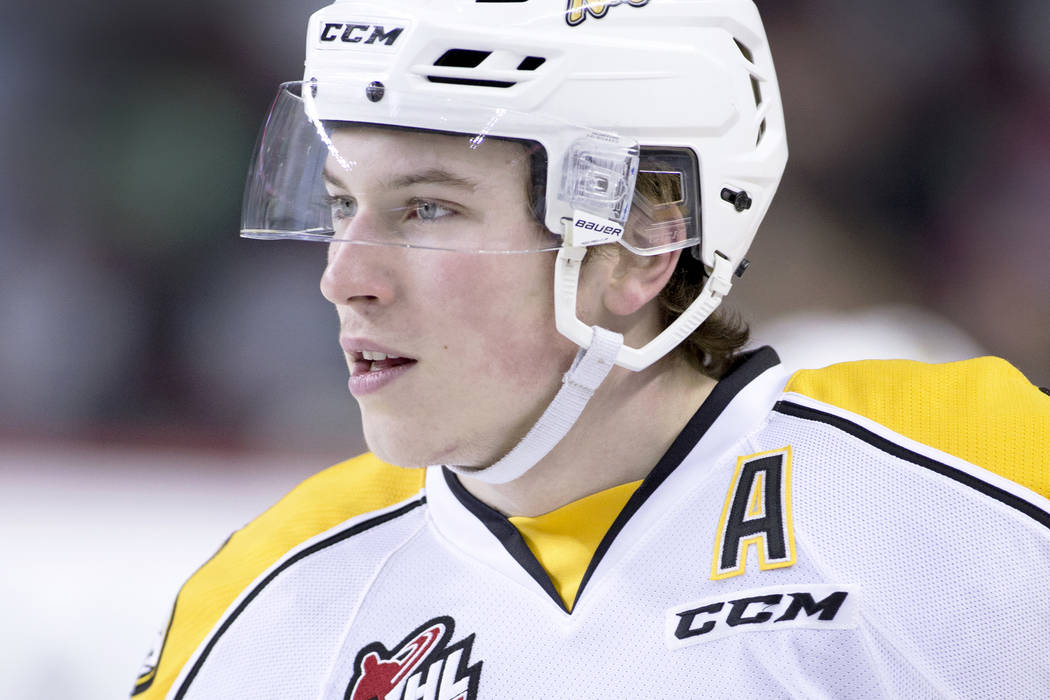Vegas Golden Knights eyeing talent at NHL draft combine

BUFFALO, N.Y. — Does the number of pullups a player can do truly determine if he’s good enough to play in the NHL?
Dan Marr would understand if you were skeptical. But the head of the league’s Central Scouting Bureau said the exercise, which is a small part of the Scouting Combine, has relevance.
“It’s not about whether a player is the strongest or most powerful,” he said. “It’s about gauging where he is athletically at 17, 18 years old.”
The NHL invited 104 players to Buffalo for a week of dry-land testing, medical exams and interviews with the league’s 31 teams. The process began Monday, and by the time the combine wraps up Saturday, teams should have a better idea of how their draft boards will look.
The entry draft will be June 23-24 in Chicago.
The Golden Knights have five people in Buffalo, led by general manager George McPhee, who has been attending the combine going back to the mid-1990s as an assistant GM with Vancouver. Marr said the Knights may be an expansion team, but when it comes to assessing talent they have a wealth of experience.
“George is one of the best evaluators out there,” Marr said. “He has assembled an outstanding hockey staff. I have no doubt Vegas will be well prepared this week.”
Marr said there are three components to the combine. The first, and perhaps most overlooked and critical, is the medical exam each of the 104 players will undergo. It is a comprehensive workup, complete with blood tests as well as neurological exams.
“It’s the most important because if someone’s hurt or there’s something wrong, the other things won’t matter,” Marr said. “They go through the same medicals as a pro’s training camp and it’s everything. Ninety-nine percent of the time, they’re healthy 18-year-olds. But the teams want to make sure that’s what they’re getting, a healthy player.”
Getting grilled
The testing, which includes strength and endurance drills, has refined itself over the years. Marr and his staff have consulted with strength and conditioning coaches from the teams to devise drills that can truly gauge performance.
“The teams have seen these kids on the ice,” he said. “What you’re trying to do is match up what they do off the ice and project how that will be on the ice. Will a kid need to put on weight or add strength? In some cases, does a kid need to lose some weight and add 10 pounds of muscle? Can we make this kid stronger or a faster skater?
“Remember, you’re trying to predict where a kid will be four years from now. By seeing how they perform in these off-ice drills helps you establish a baseline of where they’re at physically.”
The most fascinating element are the interviews. Most will last from 20 to 30 minutes. Some teams will ask players to take a psychological exam. Others will rely on gut instinct. All will want to see what kind of person they would be dealing with should they draft him.
“They don’t know what they’re getting as a person so that’s an area where a player can make an impact on his draft status,” Marr said. “I tell the kids they’re going to a barbecue and that they’re going to get grilled. We tell them to be honest, tell your story and sell yourself.”
Marr said this year’s draft class lacks the kind of generational player such as a Sidney Crosby or an early emerging superstar such as a Connor McDavid or an Auston Matthews. But he believes there are a number of good players who will have a positive impact in the NHL.
“This year’s group didn’t separate themselves,” he said. “There’s some players who can make a difference. But are there franchise players? No.”
Contact Steve Carp at scarp@reviewjournal.com or 702-387-2913. Follow @stevecarprj on Twitter.